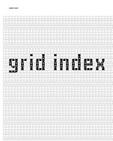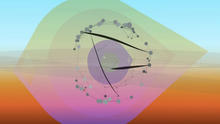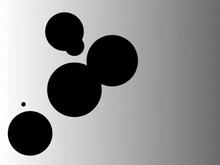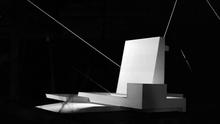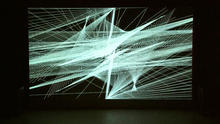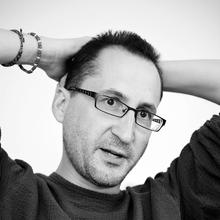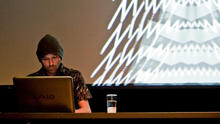Cycles 720
(2013)by Craig Allan is an hybrid visual/audio sequencer built using VVVV and Ableton Live with a custom M4L patch.
The earliest musical notation was chiseled on stone tablets in cuneiform, but it wasn’t until the Classical era of music that we developed the standard arrangement of notes on bars we know so well today. Now, it’s handy having a universal language for music, but in the era of computers, is that language something we need to see? Or could we compose and play music through manipulating some other set of visual symbols?
That’s largely the ideology behind Cycles 720, by Craig Allan of Numbercult. It’s a proof-of-concept A/V sequencer, meant for large venues, that allows someone to compose music simply by drawing shapes.
"In part I hope it inspires people to think of alternative compositional avenues to break free from the constraints of a given program, but mainly I hope that it brings a closer union between A/V systems, and a more immersive experience," Allan tells Co.Design. "I think the ability to construct music and real time graphics in tandem as part of live performance is developing apace."
As of right now, the music is built from the interplay of lines and circles. But playback isn’t a linear, left-to-right page-scanning process. Instead, the geometric abstraction becomes its own automaton, cranking and blinking with elasticity and mechanical logic. In spite of that, Craig Allan doesn’t want composers to read these shapes too literally, as they might notes on a page--and so it seems he’s programmed his own system with a bit of give. He’s specifically after a 'translation' between screen and sound, which to me implies that something could be lost (or gained) in translation from eye to ear.
"I don’t think there should be a strict one-to-one relationship between the geometrical elements of a piece and the sound itself," he writes. "I think you need to develop an aesthetic language that gets the balance between the sound and what’s happening on screen."
Source: Mint


